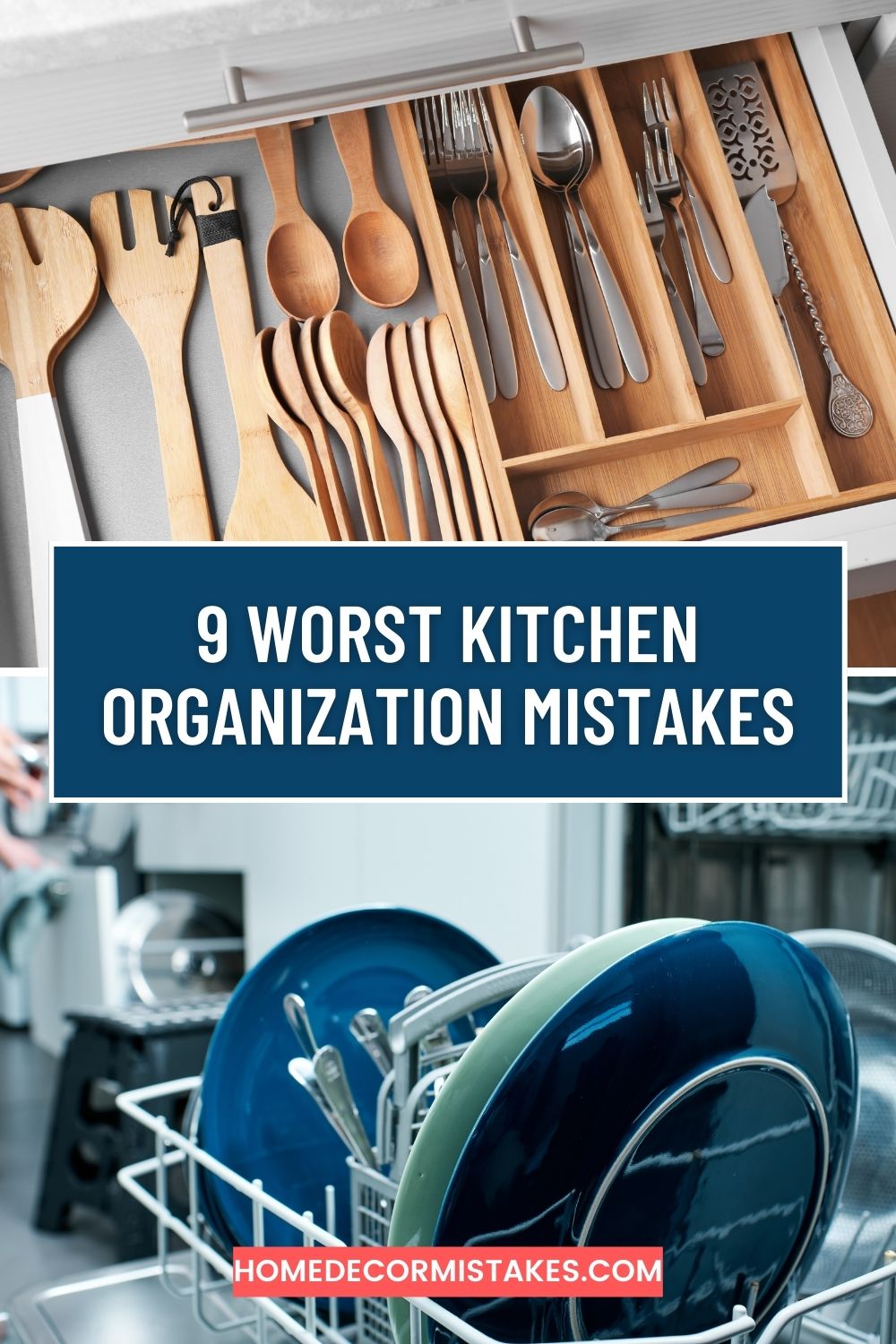9 Kitchen Organization Mistakes That Are Wasting Your Space
A well-organized kitchen can make meal prep more efficient, cooking more enjoyable, and cleaning up less of a chore. However, even the most meticulously arranged kitchens can sometimes fall victim to common organizational pitfalls. These mistakes can lead to clutter, wasted space, and frustration. In this blog, we’ll explore nine common kitchen organization mistakes and how to avoid them to maximize your kitchen’s potential.
1. Overloading Countertops
One of the most common kitchen organization mistakes is overloading countertops with appliances, utensils, and miscellaneous items. While it’s convenient to have frequently used items within reach, overcrowded countertops can make your kitchen feel chaotic and reduce your available workspace.
Solution: Only keep essential items on your countertops. Store rarely used appliances in cabinets or pantry shelves. Utilize wall-mounted racks or magnetic strips for utensils to free up counter space.
2. Neglecting Vertical Space
Many kitchens have ample vertical space that goes unused. This oversight can lead to overcrowded cabinets and drawers, making it difficult to keep everything in order.
Solution: Install shelves, hooks, and racks on your kitchen walls. Consider using the space above cabinets or the back of cabinet doors for additional storage. Vertical space can also be utilized with stackable storage containers.
3. Ignoring Drawer Dividers
Drawers can quickly become a jumbled mess without proper dividers. Mixing utensils, gadgets, and miscellaneous items in the same drawer makes it challenging to find what you need when you need it.
Solution: Invest in drawer dividers or organizers to keep items separated and easy to access. Customizable dividers can be particularly useful for creating compartments tailored to your specific needs.
4. Disorganized Pantry
A cluttered pantry can lead to expired food, duplicate purchases, and difficulty finding ingredients. Without a system in place, your pantry can become a source of frustration.
Solution: Organize your pantry into zones based on food categories. Use clear, labeled containers for dry goods, and rotate older items to the front to ensure they get used first. Regularly declutter and take inventory to keep your pantry in check.
5. Not Utilizing Cabinet Doors
The inside of your cabinet doors is an often-overlooked storage opportunity. Missing out on this space can result in cluttered shelves and countertops.
Solution: Install hooks, racks, or small shelves on the inside of cabinet doors to store items like pot lids, spices, or cleaning supplies. This can help free up valuable shelf space and keep your kitchen more organized.
6. Storing Items Based on Aesthetic Rather Than Function
While it’s tempting to arrange your kitchen based on how it looks rather than how it functions, this can lead to inefficiencies and frustration. Prioritizing aesthetics over functionality can make cooking and cleaning more cumbersome.
Solution: Arrange your kitchen items based on how often you use them and where you use them. Store frequently used items in easily accessible locations, and keep rarely used items in out-of-the-way spots. A functional kitchen can still be aesthetically pleasing with thoughtful organization.
7. Ignoring Dead Space
Dead space, such as the corners of cabinets or the back of deep shelves, often goes unused. This can lead to wasted storage potential and overcrowded accessible areas.
Solution: Utilize corner shelves, lazy Susans, or pull-out organizers to make the most of dead space. These solutions can help you access items stored in hard-to-reach areas and maximize your kitchen’s storage capacity.
8. Not Labeling Containers
Unlabeled containers can lead to confusion and disorganization. It’s easy to forget what’s inside each container, especially if they look similar, resulting in wasted time and effort searching for ingredients.
Solution: Label all containers, jars, and bins with their contents. Use clear containers whenever possible to quickly identify items at a glance. Consistent labeling can help maintain order and streamline meal prep.
9. Overlooking Small Appliances
Small appliances like blenders, mixers, and toasters can take up valuable counter and cabinet space if not properly managed. Overlooking these items can lead to clutter and reduced workspace.
Solution: Designate specific storage areas for small appliances, preferably in cabinets or pantry shelves. If counter space is limited, consider storing appliances in a dedicated appliance garage or on pull-out shelves for easy access.
By avoiding these common kitchen organization mistakes, you can create a more efficient, functional, and enjoyable cooking environment. Take the time to assess your current setup, implement these solutions, and enjoy the benefits of a well-organized kitchen. Happy cooking!

